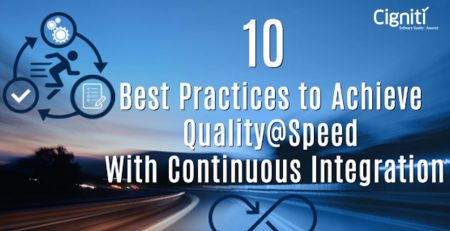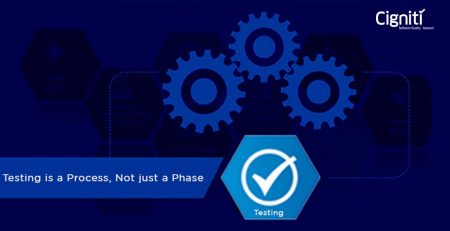Accelerate Your DevOps Journey by Leveraging Service Virtualization
|
Listen on the go!
|
Customers are demanding new software products that are easily customizable and more functional and capable than the previous edition, which has presented DevOps with new hurdles. Customers desire these things in the present and at a low cost.
In contrast to what they demand, software development has historically been beset by large expenditures and protracted development durations.
Fortunately, service virtualization is making it simple and constraint-free for DevOps to satisfy customer demand.
The idea behind service virtualization is to simulate the performance, data, and behavior of the dependent systems before turning them into virtual services.
The resulting virtual services, which operate extremely similarly to real systems, can be utilized in place of live systems.
Teams of developers, testers, and performance experts collaborate in parallel to produce applications of a higher caliber and with quicker turnaround times.
Virtual services, which are pieces of software that partially replicate application functionality, are used to simulate activity.
According to a DevOps survey, the testing phase of the SDLC has the biggest delays. Among the causes are:
- Dependent systems becoming unavailable causes delays for 80% of teams.
- When development and testing teams must work on the same project simultaneously, 56% of the important dependencies are unavailable.
- Third-party services: 79% of teams encounter limitations, time constraints, or access costs.
How does Service Virtualization work?
Service Virtualization involves three steps – Capture, Process, and Model.
Capture: The SV listener is set up at this stage between the dependent systems and the application under test (AUT). Between the AUT and the downstream dependent systems, the listener then completes the following actions:
- Observe communication between active systems.
- Made in accordance with engineering specifications.
- Draws information from log files, sample data, packet capture, and other sources.
Process: The service virtualization solution completes the following actions throughout the process step:
- It assesses the data and protocol information that were recorded during the capture stage.
- Connects users to virtual services that resemble live services.
- The interactions between request and response pairs make up the virtual services, which can also be utilized for testing and development.
Model: In place of the dependent systems, the teams now deploy the virtual services that were established in the previous process step. The model stage allows for
- breathing, living, LIVE model
- sophisticated and contextual behavior
- handling of changing behavior automatically.
The Benefits of Service Virtualization
By removing obstacles to crucial system access and responsiveness during testing, service virtualization aids businesses in achieving DevOps objectives.
Here are some of the benefits of Service Virtualization.
- Allow several development and testing teams to operate concurrently.
- Reduce the need for environments that high-velocity development and test procedures simultaneously create to a large extent.
- Test sooner in the software lifecycle when problems may be fixed more affordably and easily.
- Component-level load testing under circumstances like those in production
- By mimicking necessary third-party services, expenditures can be reduced.
Ways to Put Service Virtualization to Use
There are various areas where service virtualization can be used to boost productivity.
Agile/Parallel Development
Multiple operations teams are involved in modern software techniques, and they each work on different aspects of the environment before combining them via APIs to create the final result. DevOps teams can use service virtualization to simulate missing components while awaiting access to an application component so they can continue developing the application.
Performance Testing
To ensure that your application has the full capacity required for rapid response times, such as during the holiday season, use service virtualization. A live performance environment frequently costs nearly as much to maintain as a business’s production infrastructure. Companies can significantly reduce the cost of performance testing by simulating the dependencies of the APIs they are testing using service virtualization.
Test Data Management
Numerous datasets that businesses own play a significant role in how they connect with their clients, like a bank. PII (personally identifiable information), such as social security numbers, may be present in this data. Real production data sources should not be made available to testers for their purposes. With the use of service virtualization, testing teams can create data synthetically, such as properly formatted and disguised social security numbers, which they can use to test capabilities.
Conclusion
Businesses today are making all attempts to improve their present IT initiatives and techniques to stay competitive and accelerate digital transformation while embracing new technologies and software development approaches. This has led to exponential growth in the digitization drive for almost every sector. As a result, there has been the development of a massive interest in software quality due to concerns such as security, quality, speed, and cost.
Against this backdrop, join us for an insightful digital dialogue series where Cigniti’s thought leaders give you an in-depth look at how businesses that adopt DevOps can provide higher-quality releases with fewer performance issues and how best DevOps practices can enhance the customer experience. They will also talk about how virtualization facilitates testing and eases project management, and how the future of software development and testing, as well as IT project management, is dependent on service virtualization.
As companies race to achieve digital transformation with software quality as a strategic enabler, effective test data management (TDM) becomes a game changer. Now more than ever, there is a need for robust TDM solutions that allow organizations to provide unrestricted access to high-quality test data whilst protecting against the risk of customer PII breaches. In this context, this webinar will also delve into how investing in an effective TDM strategy in enterprises can reduce the cost of storing and processing test data, increase coverage, and enhance test cycle efficiency for delivery excellence.
Join Shamim Ahmed, CTO – DevOps at Broadcom, Raghuram Krovvidy, Chief Delivery Officer at Cigniti, and Sairam Vedam, Chief Marketing Officer at Cigniti as they share insights on quality engineering for the digital enterprise.
If you need help with accelerating your DevOps journey by leveraging Service Virtualization, visit Cigniti Quality Engineering Services for the digital enterprise.





Leave a Reply